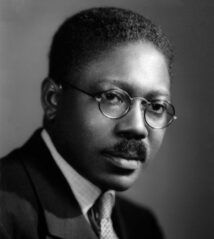NOTE FROM THE CEO
When I stepped into the role of CEO and owner at talkStrategy, I knew that I had the huge responsibility to foster a brave space coupled with an inclusive agency culture open to all perspectives. I don’t take this responsibility lightly. I am proud of the team we have built, each person bringing their own perspectives to the work, to the enrichment of the agency and to each other as individuals. Beginning this month, we will embark on a year-long journey to learn more about each other, explore new perspectives, and have candid conversations. As communications professionals, our role is to help brands navigate the modern channel ecosystem. We hope this endeavor will introduce new thinking, making us better communicators, better stewards of the ecosystem, and frankly better humans. To ensure we have diverse perspectives, the exploration will be spearheaded by rotating members of our team of talkStrategists. I hope you join us over the next weeks and months, as well as join in the dialogue.
Let's talk: Aaron Douglas
During this Black History Month, we are taking the time to acknowledge and honor African American professionals who have made contributions to the Marketing and Communications industry as a whole, as well as recognizing those who are history in the making. Next, we take a look at the groundbreaking illustrations of Aaron Douglas and his contribution to American art history.

Aaron Douglas, Graphic Artist, Painter, and Teacher
Aaron Douglas was a groundbreaking illustrator and artist during the Harlem Renaissance. Along with philosopher Alain Locke, he helped create a new visual language that broke free from traditional European art styles and incorporated African heritage. His unique style fused Art Deco’s geometric shapes and angular forms with Art Nouveau’s linear rhythm. His work often referenced African masks, sculptural figures, and dance.
Born in Topeka, Kansas in 1899, Douglas earned his Bachelor of Fine Arts degree from the University of Nebraska in 1922. He taught art classes in Kansas City, Missouri before moving to Harlem in the 1920s, where he lived with his wife and became a central figure in New York’s artistic culture. In 1925, the influential publication Survey Graphic released a special issue titled “Harlem: Mecca for the New Negro,” which featured Douglas’s illustrations and was a major factor in his decision to move to New York.
Douglas was renowned for his book illustrations and cover designs, which helped establish a new vision for Black artists. He created illustrations for prominent writers such as James Weldon Johnson, Langston Hughes, and Claude McKay. Douglas’ work for Johnson’s epic poem God’s Trombone, published in 1927, marked a turning point in his career and drew critical acclaim.
In addition to his book and magazine work, Douglas received numerous commissions for murals and paintings, including a four-panel mural for the Texas Centennial Exposition in Dallas. He returned to Fisk University in Nashville intermittently during the 1930s, eventually becoming chairman of the art department and mentoring several generations of students before retiring in 1966.
Throughout his career, Douglas used African elements to portray American Blackness in a symbolic and intricate manner that was intricately connected with the modernist movements. He passed away in Nashville in 1979 at the age of 80, leaving behind a legacy as one of the most important artists of the Harlem Renaissance.

FUN FACT
One of Douglas’ most important works, Let My People Go (1935-39), is currently on view in the Metropolitan Museum of Art.
Thank you for taking to the time to learn more with us about the impact of Black professionals in the field. Stay tuned throughout the coming months for more moments of reflection and homage. Follow for more talkStrategy storytelling at @wetalkstrategy.
